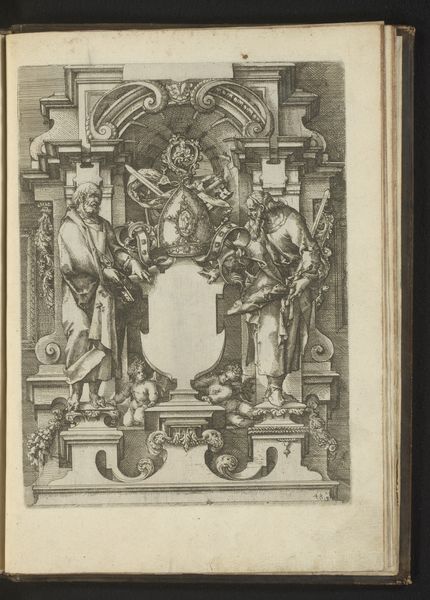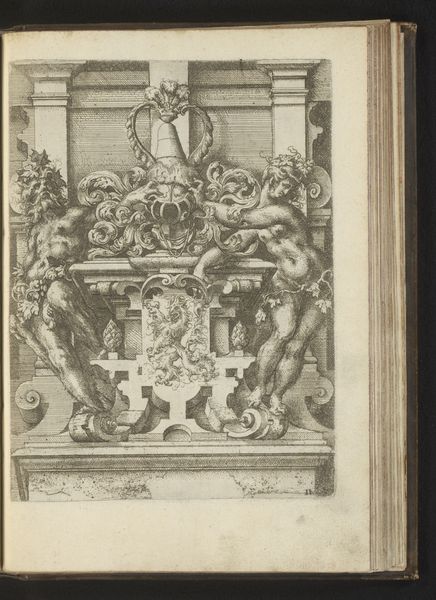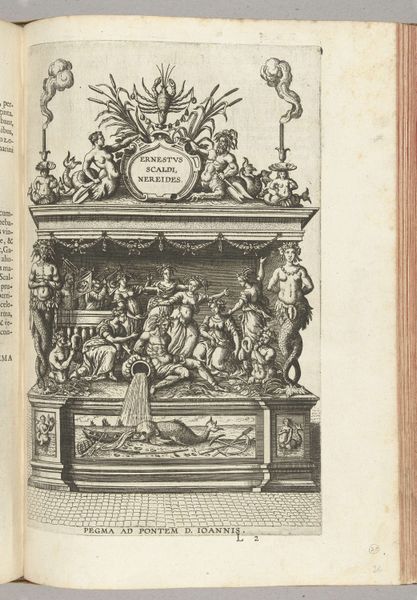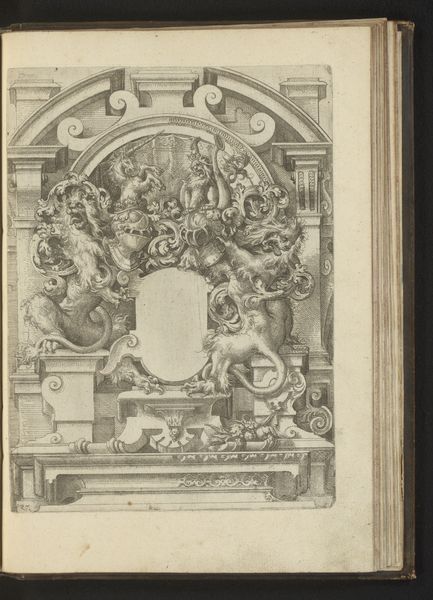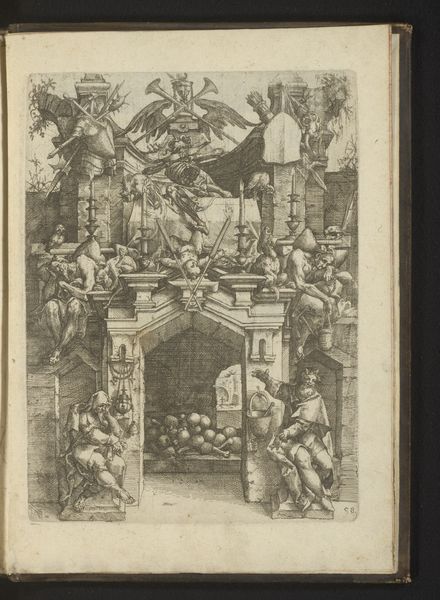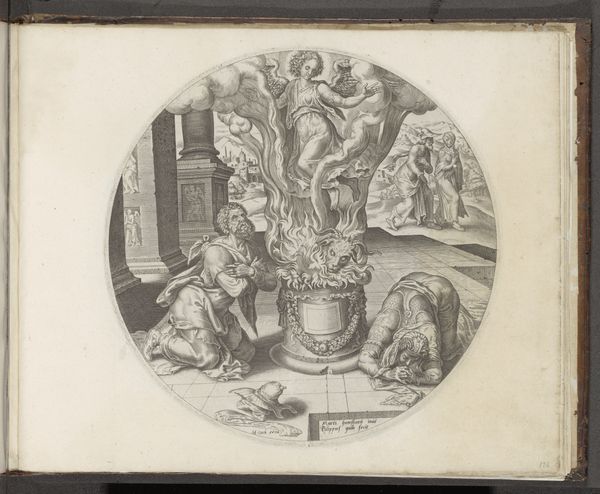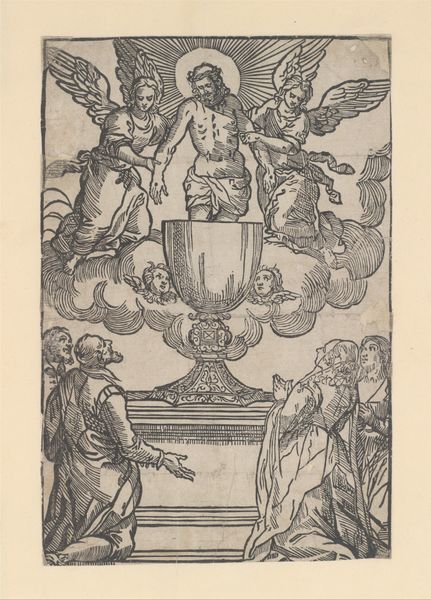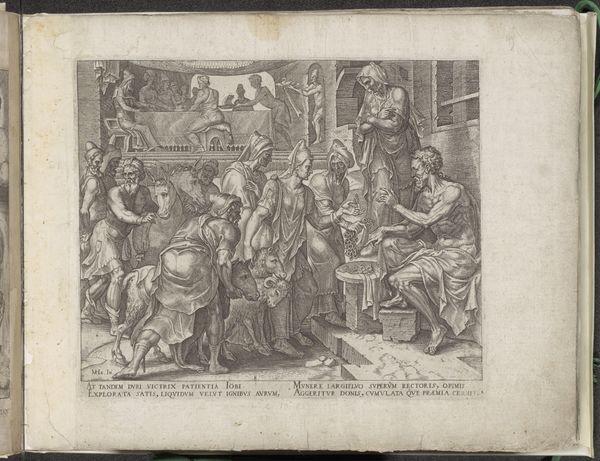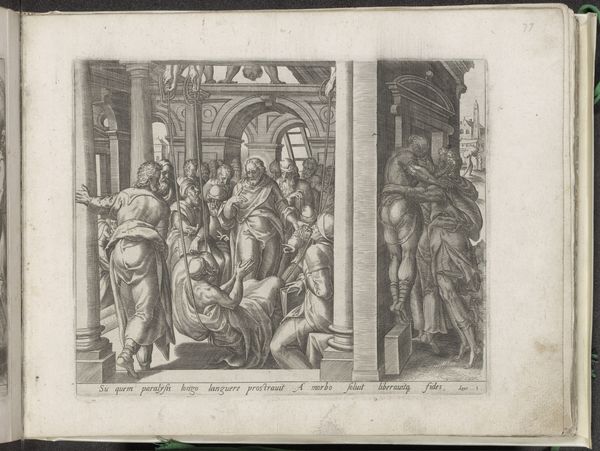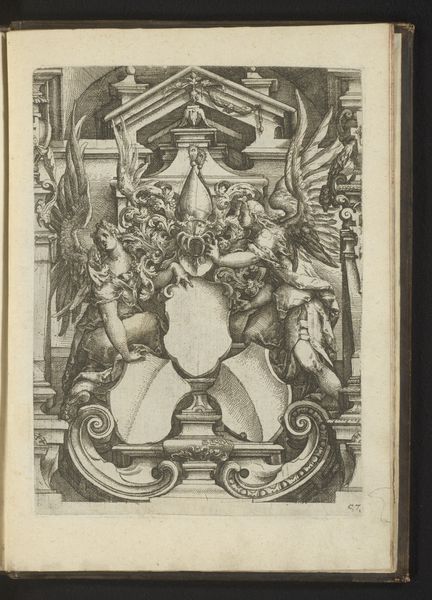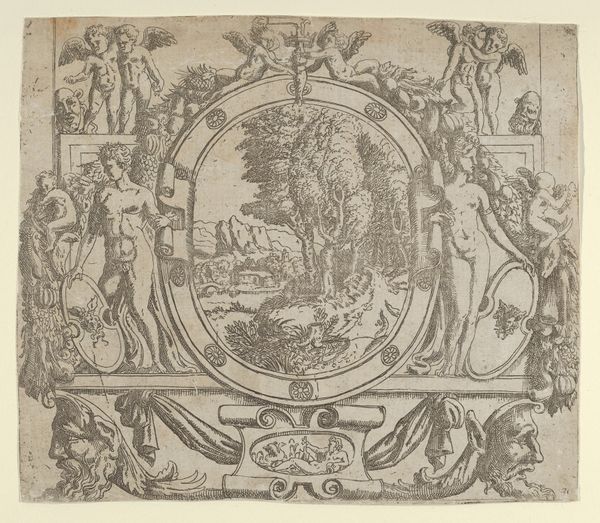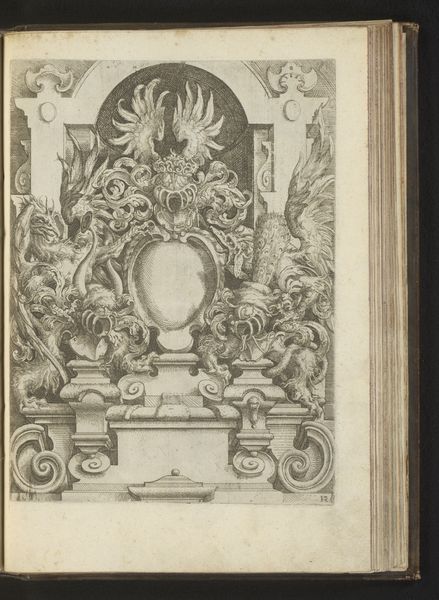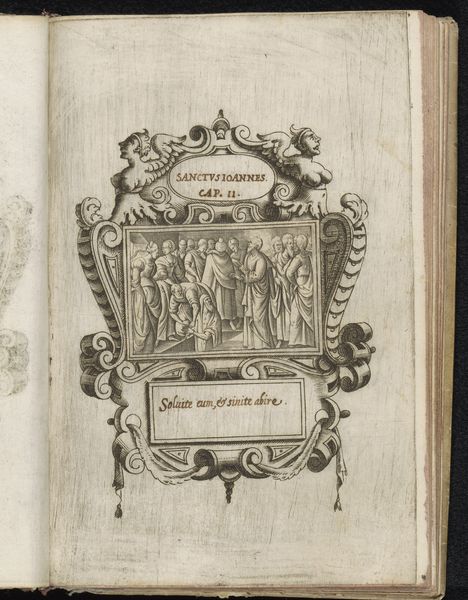
Cartouche geflankeerd door twee vrouwen, een eenhoorn en een zwaan 1593 - 1595
0:00
0:00
drawing, print, ink, engraving
#
drawing
#
allegory
#
pen drawing
# print
#
mannerism
#
figuration
#
ink
#
engraving
Dimensions: height 248 mm, width 186 mm
Copyright: Rijks Museum: Open Domain
Curator: This artwork, created by Wendel Dietterlin I between 1593 and 1595, is an ink and pen drawing titled "Cartouche flanked by two women, a unicorn and a swan." Editor: My first thought is how elaborate the composition is! So much ornamentation packed into one image, giving it a very dense, almost claustrophobic feel despite the empty cartouche in the center. Curator: Dietterlin, deeply influenced by mannerism, explores allegory in this engraving. His approach to art demanded integration into the public and the development of powerful imageries through symbolic meanings. We should remember that printmaking at that time played a vital role in distributing ideas and visual concepts. Editor: Absolutely. The two women positioned on either side of the cartouche...are they representations of Justice and Fortitude, perhaps? Justice, who bears a sword, has traditionally been racialized, how could this placement have worked against groups of persons from the position of race, gender and social politics? Curator: That’s a compelling perspective to consider the role of women in Mannerist art! I would argue these are idealized figures more representative of civic virtues rather than strict allegorical representations tied to contemporary women or particular communities. Dietterlin used complex symbolism as vehicles to communicate elite political views on social order, reflecting biases about an elite demographic's social hierarchy and virtue. The very inclusion of the unicorn, a symbol of purity, speaks to a desire for social control through idealization. Editor: I suppose, when we think about the intended audiences and patrons, a focus on idealization over direct representation makes sense from an institutional perspective. Considering that cartouches often framed coats-of-arms that showed specific patriarchal status, how accessible would a re-contextualized interpretation of gender roles have been during that period of time? It feels less revolutionary, or even evolutionary, considering those gender roles are largely still expected and demanded today. Curator: Well said. I think by recognizing its complex place within artistic and political discourses we can recognize the way in which this artwork challenges our understandings. Editor: This has been illuminating! Examining how even seemingly decorative art can unveil historical biases helps contextualize present power dynamics and inspire modern creative pursuits.
Comments
No comments
Be the first to comment and join the conversation on the ultimate creative platform.
